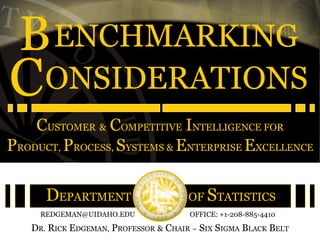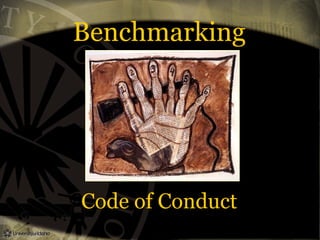This document provides an overview of benchmarking, including definitions, types of benchmarking, benchmarking methodology, sources of information for benchmarking, benchmarking compliance considerations, and examples of performance measures that can be used for various business functions and processes. Benchmarking is defined as the process of continually searching for best practices and implementing improvements to become best-in-class. The document outlines various types of benchmarking and a six-step benchmarking methodology. It also discusses sources of benchmarking information and compliance considerations. Finally, it provides examples of performance measures that can be used for areas like customer service, products, business processes, support functions, technology, costs, and more.



















































